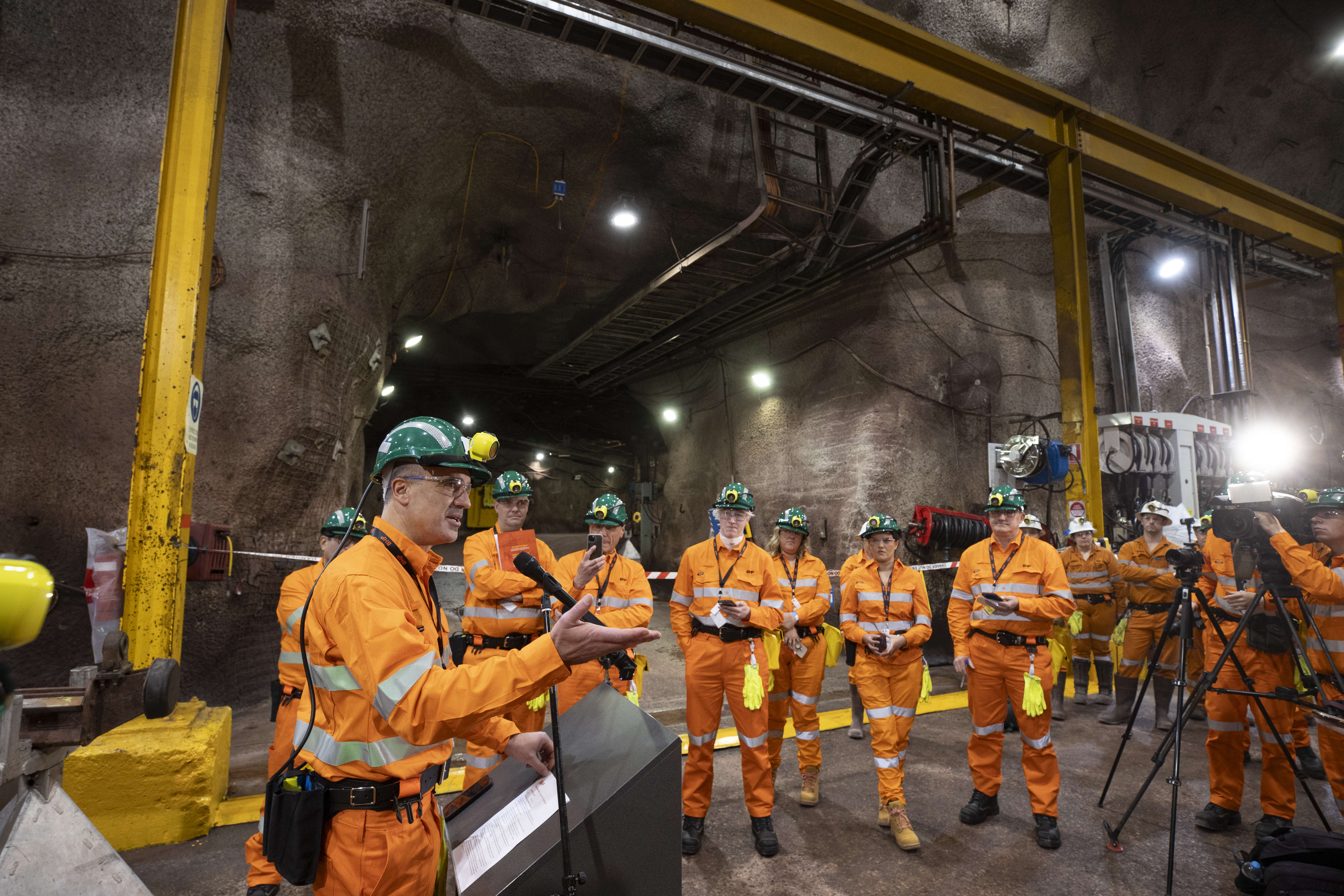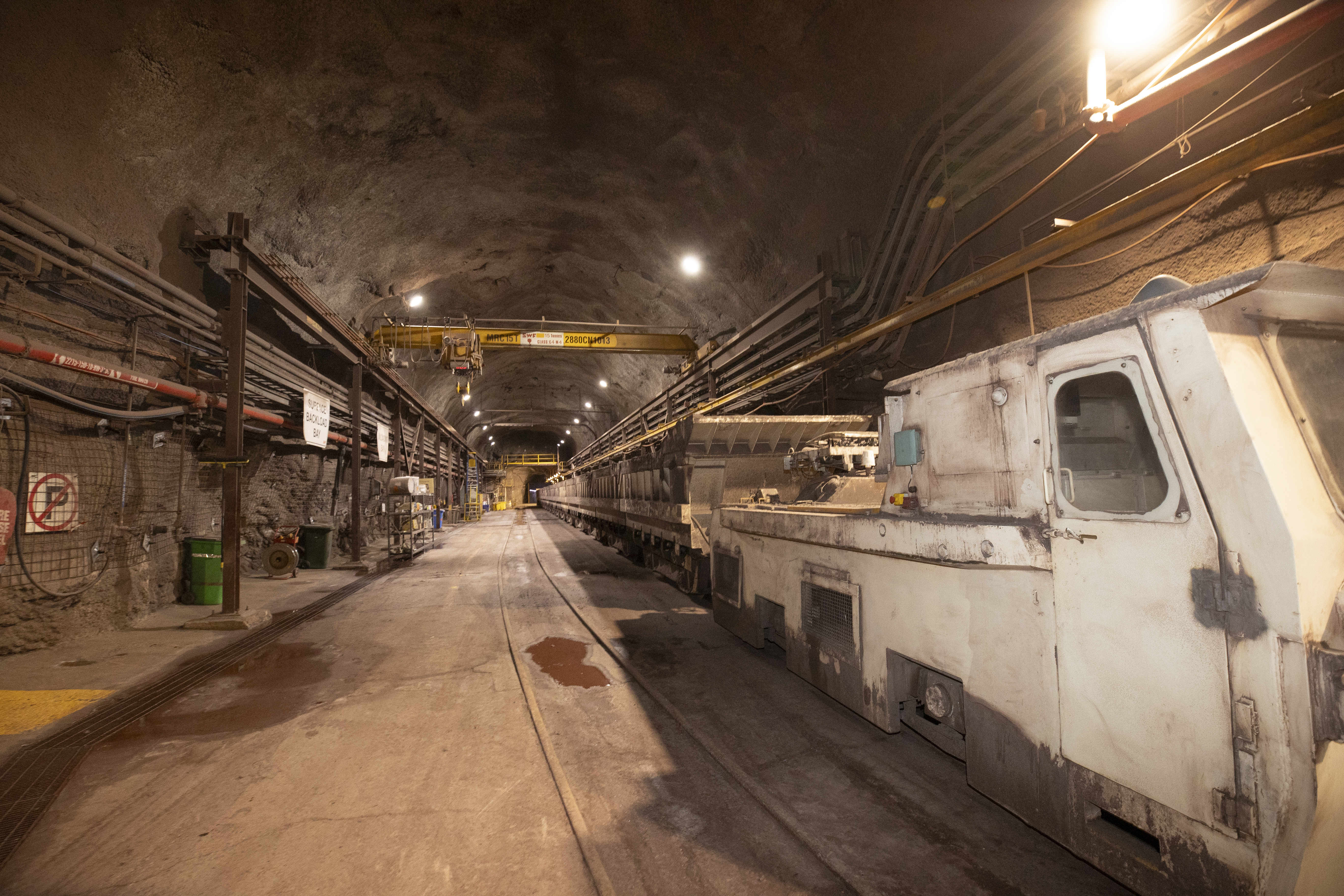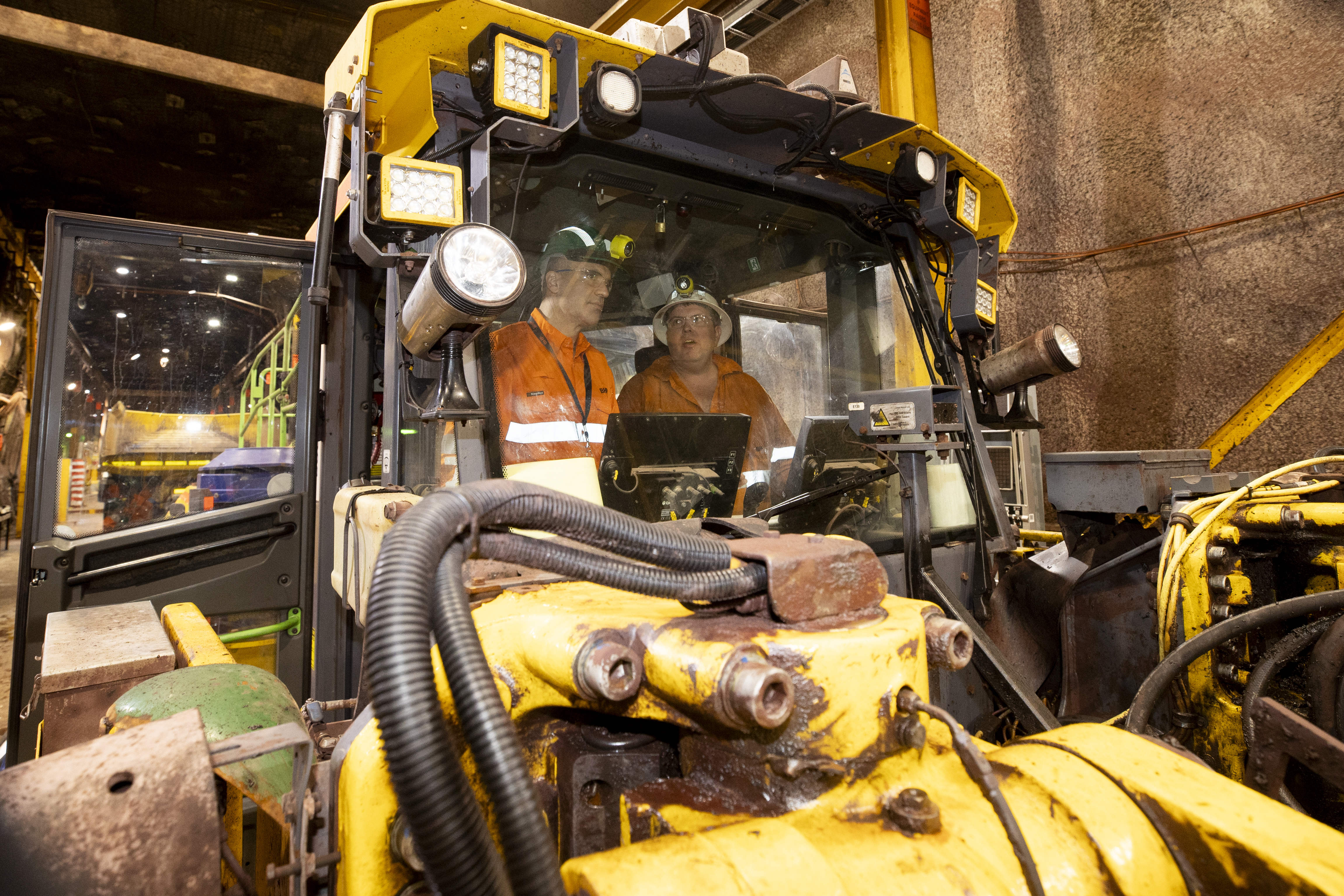‘Generational opportunity’: BHP’s bold $840 million copper splash
Australian mining giant BHP is spending hundreds of millions of dollars on its Olympic Dam mine, creating new jobs and boosting production at the state’s massive copper precinct.

BHP announced its new investment would trigger huge future growth of the SA copper province at the company’s Olympic Dam mine 560 kilometres north of Adelaide at a press conference attended by Premier Peter Malinauskas, Treasurer Tom Koutsantonis and three federal ministers.
Building a new access tunnel, a more extensive underground train network with six new trains and the installation of an oxygen plant were at the centre of global mining giant BHP’s $840 million investment in its Olympic Dam mining operations.
BHP is the largest producer of copper globally and currently employs around 8,000 South Australians. It hoped the expansion project would boost its copper base from 1.7 million tonnes to 2.5 million tonnes each year.
“Achieving that scale requires significant copper growth, and we are fortunate to have a world-class copper province right here in South Australia to do just that,” BHP chief operating officer Edgar Basto said.
In addition to Federal Trade Minister Don Farrell, Resources Minister Madeleine King and Industry and Innovation Minister Tim Ayres, BHP top brass were at the announcement including Basto and Copper SA asset president Anna Wiley.
They said the investment would fund key projects including the previously-announced underground access tunnel into the Southern Mine Area so workers could reach a new section of copper – this project alone was expected to create nearly 200 construction jobs throughout the project development.

“So we will have about 200 construction jobs at least. So there’ll be at least 200 construction jobs, potentially more, particularly on the decline as we go forward, but equally with the broader construction activities. And then we’ll see a number of operational jobs equally come online as that decline goes into action,” Wiley said.
“So let’s say overall, about 250 construction and operation jobs, I would say, from the announcements today, and then longer term, as we’ve said, like really positive.”
While Olympic Dam already extends hundreds of metres underground, the company was yet to find the bottom of the deposit.
A new backfill system to deliver paste fill via underground pipes was expected to improve how mine assets were stabilised and allow access to previously inaccessible ore sections. An expansion of the underground train network was announced to take the total track length from 4.85km to more than 6km, supported by six new trains.
You might like
The company believed the additional installation of a new oxygen plant would improve smelter performance and support increased copper processing capability.
BHP’s stable of Olympic Dam, Carrapateena and Prominent Hill mines combined creates the third-largest copper resource in the world. Silver, uranium and gold were also mined across the resources.
The company has already announced a smelter refinery project to expand refinery capacity and increase copper production to approximately 500 ktpa, and potentially up to 650 ktpa. This would involve the development of a two-stage smelting process, and expand refining facilities to produce cathode copper, gold and silver.
“The South Australian copper province is already performing strongly, consistently delivering more than 300,000 tonnes a year for the past three years,” Basto said.
“We are progressing a series of strategic projects that will strengthen our base business and help lay the foundations for future growth.”
Wiley said the investment was a “clear signal of our long-term commitment to [the South Australian copper province’s] development”.
“These investments strengthen the foundations for future growth – creating jobs, boosting local business opportunities, and driving greater operational efficiency across our sites,” she said.
“We are standing at the edge of a generational opportunity to unlock transformational copper growth in South Australia.
“Copper SA is already on the global map, and as the race intensifies to secure copper for the energy transition and growth in data centres, we are well positioned to supply more of what the world needs.”

SA epicentre of copper
Trade Minister Don Farrell said the company had been a “cornerstone of South Australia’s economy for decades, supporting thousands of jobs and local businesses who supply their sites, and this investment in the future of Copper SA means that it will continue to be for many years”.
While Premier Peter Malinauskas said the expansion of Olympic Dam was key to a net-zero emissions future.
“Copper is the key to electrification of transport fleets, for building renewable energy infrastructure, and for energy generation, distribution and storage,” he said.
“South Australia is at the epicentre of copper. BHP realises that, which is why it is investing billions of dollars in South Australia, to unlock the next massive copper opportunity – and it starts with massively growing Olympic Dam.
“The ambition more broadly in the copper province is clear – doubling current production, supporting thousands of jobs, and developing a two-stage smelter.”
Stay informed, daily
Northern Water project
To get there, the Premier said “we’ll need more water”. Malinauskas said the government was working “in close partnership with BHP to closely examine the Northern Water Project” and a decision was likely to be announced before next year’s March State Election.
If built, Northern Water would oversee the construction of a 260 megalitre per day desalination plant and a 600km pipeline to transport desalinated water to the Far North to meet the needs of mining, defence and pastoral industries.
The state government was currently assessing two locations for the project. Feasibility studies have been undertaken at Cape Hardy (200 kms from Whyalla) and Mullaquana Station (20kms south of Whyalla) for the project.
In April, negotiations for the potential sale of land at Cape Hardy for the Northern Water desalination plant ended, with the state government saying it was yet to make a final decision about the project’s location.
“There has been an awful lot of analysis done around the location of the desal plant. Obviously, we’ve looked at Cape Hardy and also Mullaquana…and I wouldn’t say we’re too far away from an announcement in that regard,” Malinauskas said on Wednesday.

BHP renewable energy deal
Today’s announcement followed a flurry of announcements from BHP regarding its South Australian assets in the past week.
The company recently signed a baseload agreement with Neoen – its third and largest renewable electricity supply agreement in the past four years.
That will see 100 megawatts of renewable energy supplied to power BHP’s Copper SA province, expected to meet about 70 per cent of the area’s electricity needs from renewable energy in FY30.
On Thursday last week, the company also announced modular construction firm Fleetwood Australia had started building 444 accommodation rooms and four laundry buildings from its Para Hills West facility for its Olympic Dam site.
Accommodation and other facilities would be needed to house an expected 1600-strong workforce for its major smelter maintenance work from mid-2027, ahead of the two-stage Smelter Refinery Expansion.
Olympic Dam’s South Village will be fitted out with up to 1080 new accommodation rooms, laundry facilities, kitchens, dining and recreation areas, while 496 existing accommodation rooms will be refurbished.
“Fleetwood, Ahrens, MPS and Ausco each bring strong expertise and experience to deliver this accommodation in support of our smelter maintenance project,” Wiley said about the deal.
BHP made a major bet on South Australian copper in 2023 after it acquired Oz Minerals for $9.6 billion. That gave it control over the Carrapateena and Prominent Hills mines.
BHP saw its South Australian earnings grow by 23 per cent in the last financial year, driven by higher-than-average realised prices for copper, gold and silver.
The group generated US$1.9 billion in FY25 from SA operations – up from US$1.6 billion the year prior – and produced 316 kt of copper over the 12 months (down 2 per cent).
– David Simmons was hosted on the trip to Olympic Dam by BHP








